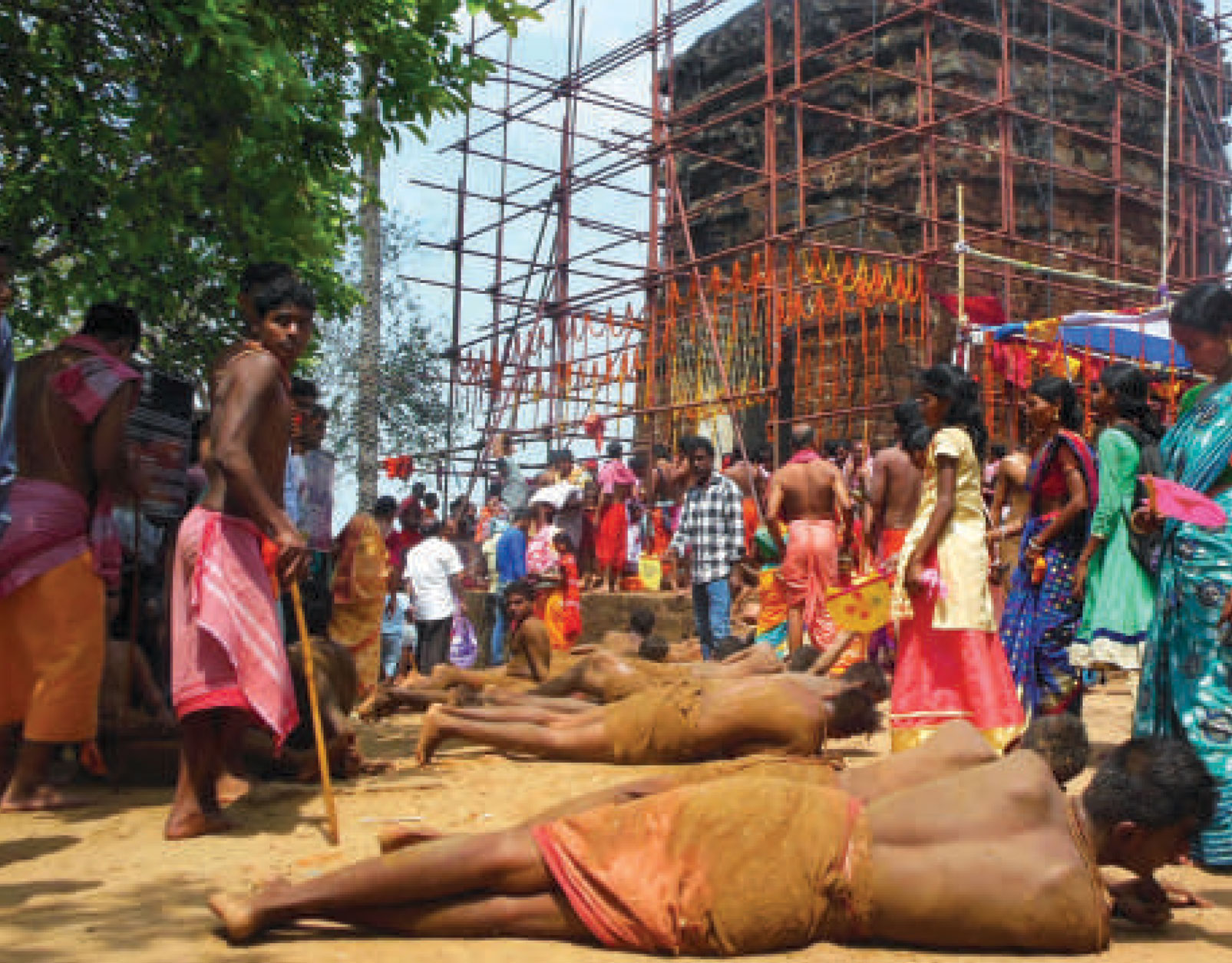This Kaluburi is worshiped in Ayodhya village of Bishnupur block.However, it is rumored that while fishing in Darkeshwar river, a stone statue of Kastipathar came up in the net of fisher man . Then She established herself according to the dream of the goddess. On the tenth day of Shuklapaksh in the month of Jaistha, the devotees gather through the fair of Dasohora . People trom more than thirty village participated in this fair. Yet eight days before the fair, the priest, following the tradition, visited the whole village and urged thevillagers to join in the festival. On that day, the devotees came to the temple from the river ghat after maintaining various rituals.
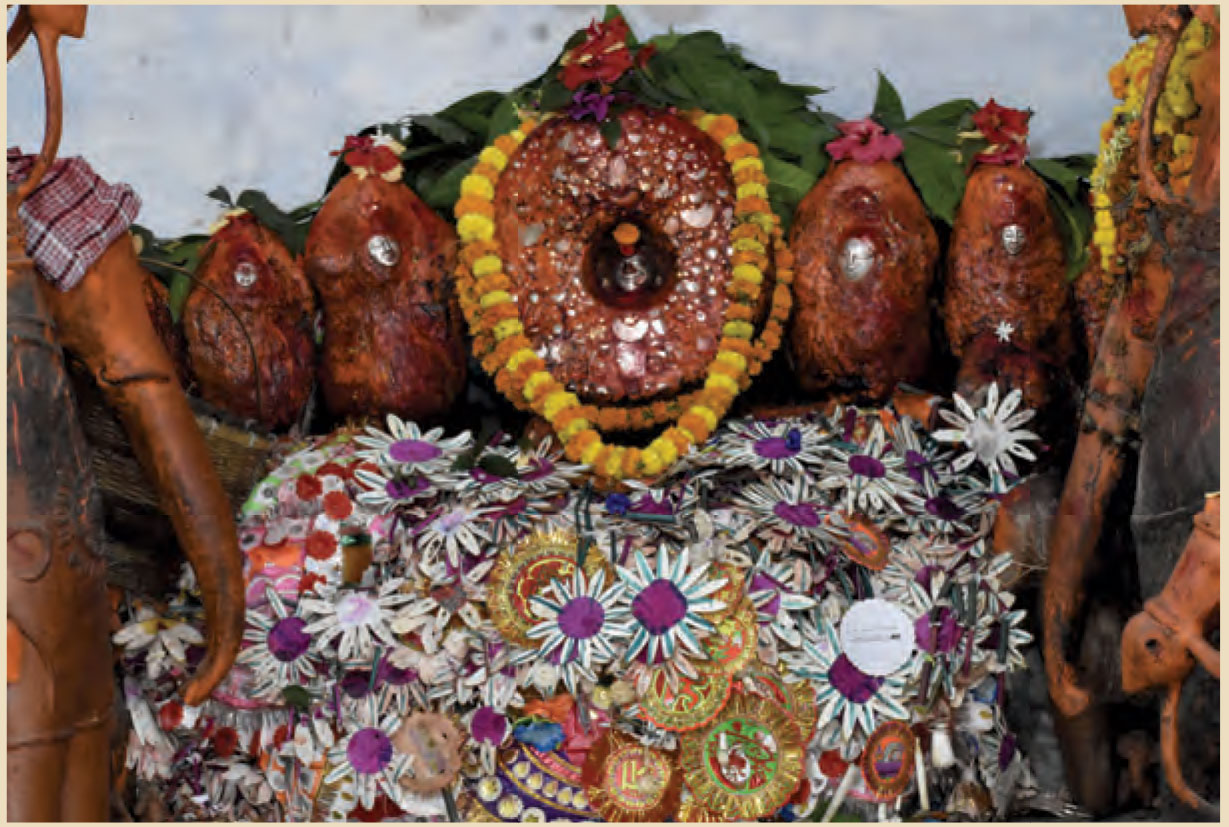
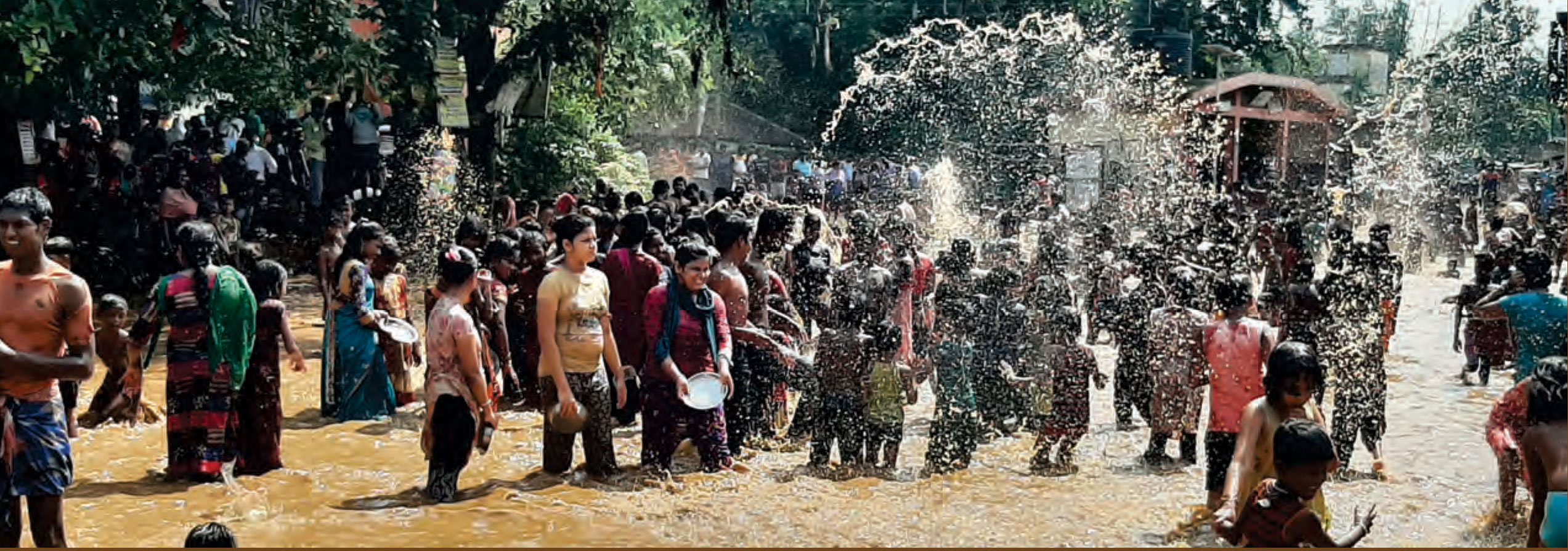
On the Vijaya Dashami of Durga Puja, when the women of rural Bengal are engaged in playing Sindur, the young and old women ie from eight to eighty of the villagers of Jaipur in Bishnupur subdivision get up to play with mud. In 17 th century king of Malla Raghunath Singh established the temple of "Jhagrai Chondi" after the victory of the war. From then onwards, following the tradition, mud games started among the common people on that particular day. The water of seven ponds of the village is stored in the temple premises beforehand. Devotees think that playing with mud cures all kinds of skin diseases.
The Rath Utsav of Bishnupur dates back to the Malla era.This celebration started approximately 350 years ago.Historians say that Mallaraj Raghunath Singha started this popular Rath Utsav. Prabhu Jagannath, Balaram and Mata Subhadra don’t reside in these chariots. Instead, Sri Sri Radhamadangopal Jew is worshipped in Madhabganj's chariot and Sri Sri Radhalal Jew in Krishnaganj's chariot.The deities are worshipped and Nitya seva is done by the local puja committees. Shiromani Devi, the queen of Mallaraj Bir Malla wished to built a five pinnacled temple
and so was being done at Madhabganj area. Later, the Madhabganj chariot had been prepared with the same design as the temple. Sri Sri Radhamadangopal Jew resides in this brass chariot during Rath Utsav. Although the permanent temple of Sri Sri Radhalal Jew is in the Paathar Darja (Stone gate) area, the deity doesn’t reside there. He resides in the temple at Krishnaganj which is made by the local puja committee. Every year, the Rath Utsav of Bishnupur is celebrated here with love by the devotees.
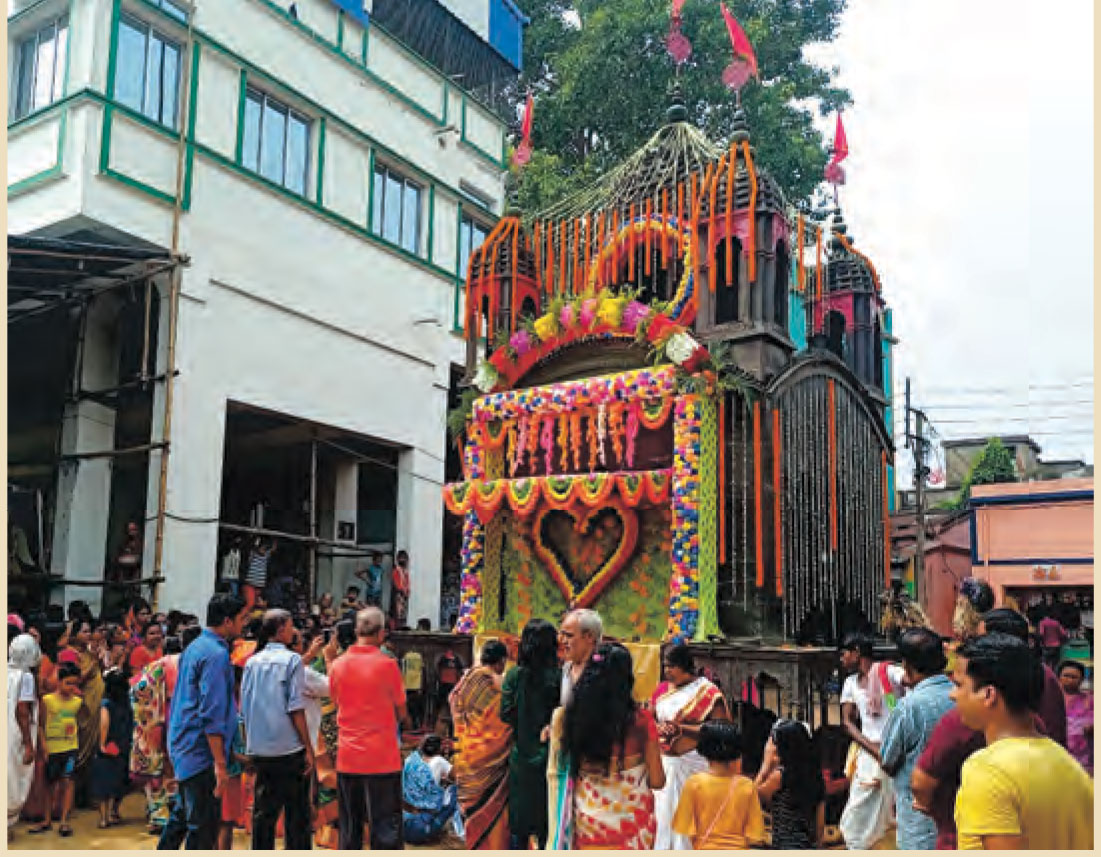
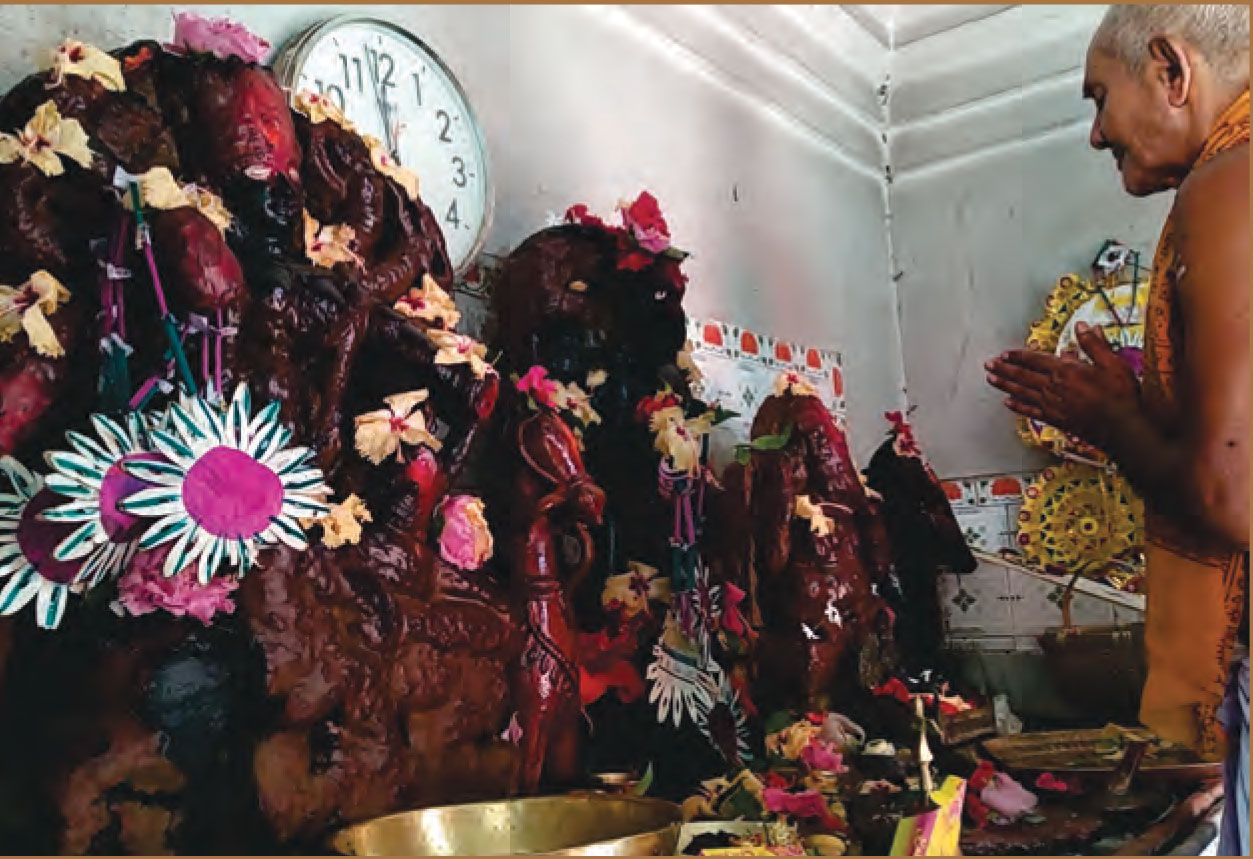
Goddess Sarvamangala is present in Naricha village of Patrasayer block, about twenty kilometers away from Bishnupur Sub Division.. The temple is built in the style of Charchala made of Makra stone. This shrine is on the banks ot Dwarkeswar river. The architecture and sculpture of the stone goddess idol fascinates tourists and researchers. Chakravarti family of Naricha is in charge of the idol. At the same time Sarvamangala and 'Narayan Shila' exist in the sanctum of the temple. The fish with spices is wrapped in banana leaves and
burnt on the fire and then served to the Goddess . However, during the performance of this 'Khalapora bhog' by the Goddess, the place of Narayan Shila changed.PoushSankranti fair is held in Naricha. It is said that Goddess Sarvamangala herself used to wear conch shells near Shankhari in Bishnupur as bridesYadav Chowdhury, a mightygeneral of the Mallaraja period, got a dream order and found a stone idol of this Giddess in the forest of Nalkhara in Naricha village on the banks ot Dwarkeshwar river. Goddess Sarvamangala temple was built under the direction of Goddess.
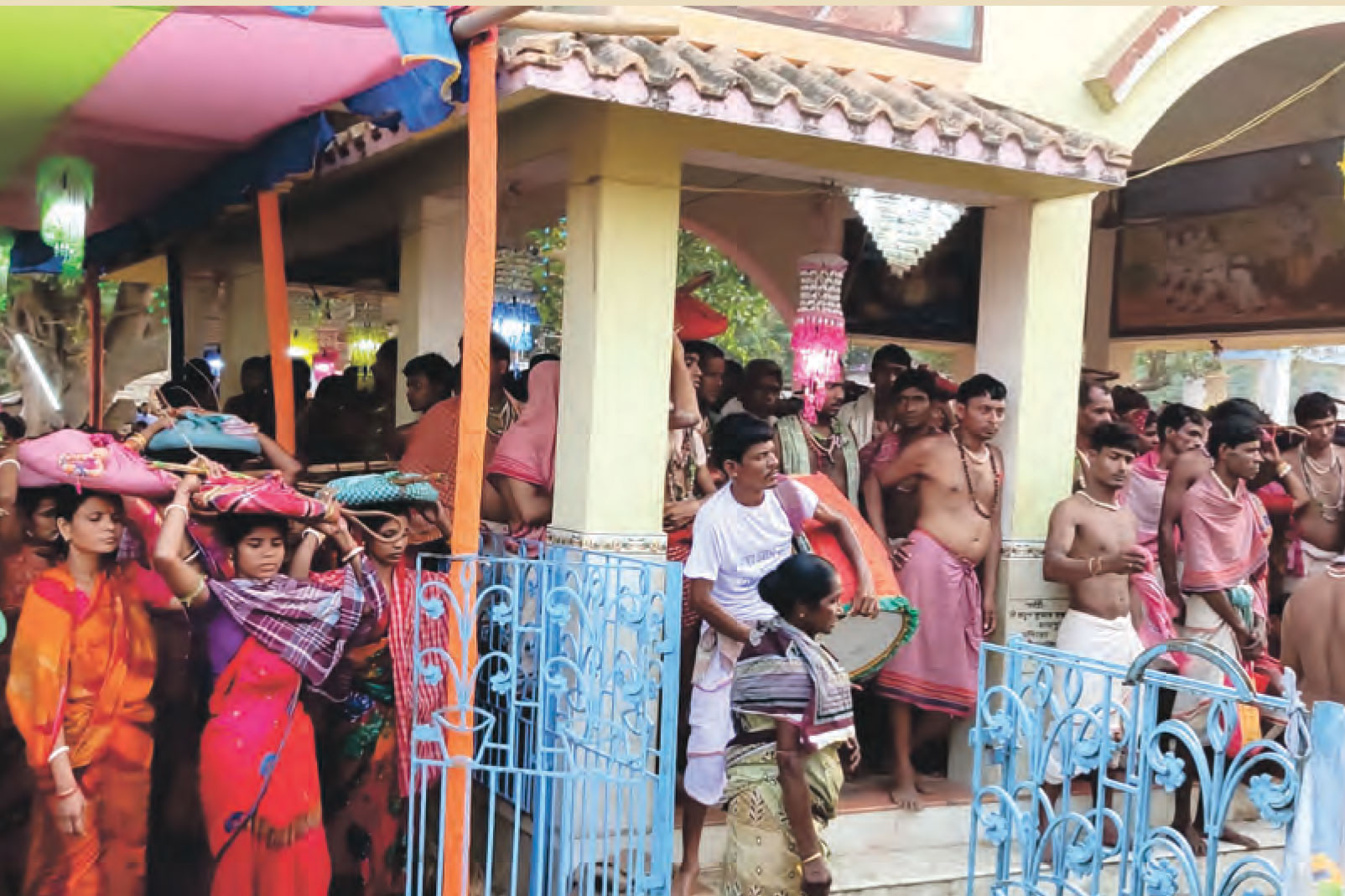
Gangadhar Shiva in the western part of Nangar village in Kotulpur block of Bishnupur subdivision. About three and a half hundred years ago, the Shivalinga of Gangadhar was rescued from a body of Dwarkeshwar river. The first to be noticed by a member of the Roy family of Bhagalpur. Then with the help of the villagers that Shibalinga was established in Nangar village. The people of Nangar, Napukur, Sundarchak, Bhagalpur, Baddichak, Bhabapur and Akhrashol gather at the last four days of Chaitramas. Although this idol appeared in the story full of ancient traditions and greatness, all those stories have remained hidden from the public eye.
Ayodhya village is 18 km away from subdivision town Bishnupur. There is the zamindar dynasty of Bandyopadhyay who got the title of Rai Bahadur given by the British. Later, however, they came to be known as Babu. History shows that these two Shiva temples were established by Maheshchandra Bandyopadhyay, the eldest son of Krishnamohan Bandyopadhyay of the royal family in 1857-58. Still in the festival of Shivaratri, the women of the royal family go there and worship. However, the family deity of the royal family Radha Damodar Banshi Gopal Jiu is in the royal palace of Ayodhya. In the forest of Murliganj, about 4km away from the royal family, these two Shiva temples remained hidden from public view. Manohar Bandyopadhyay, a member of the royal family, is demanding government protection.
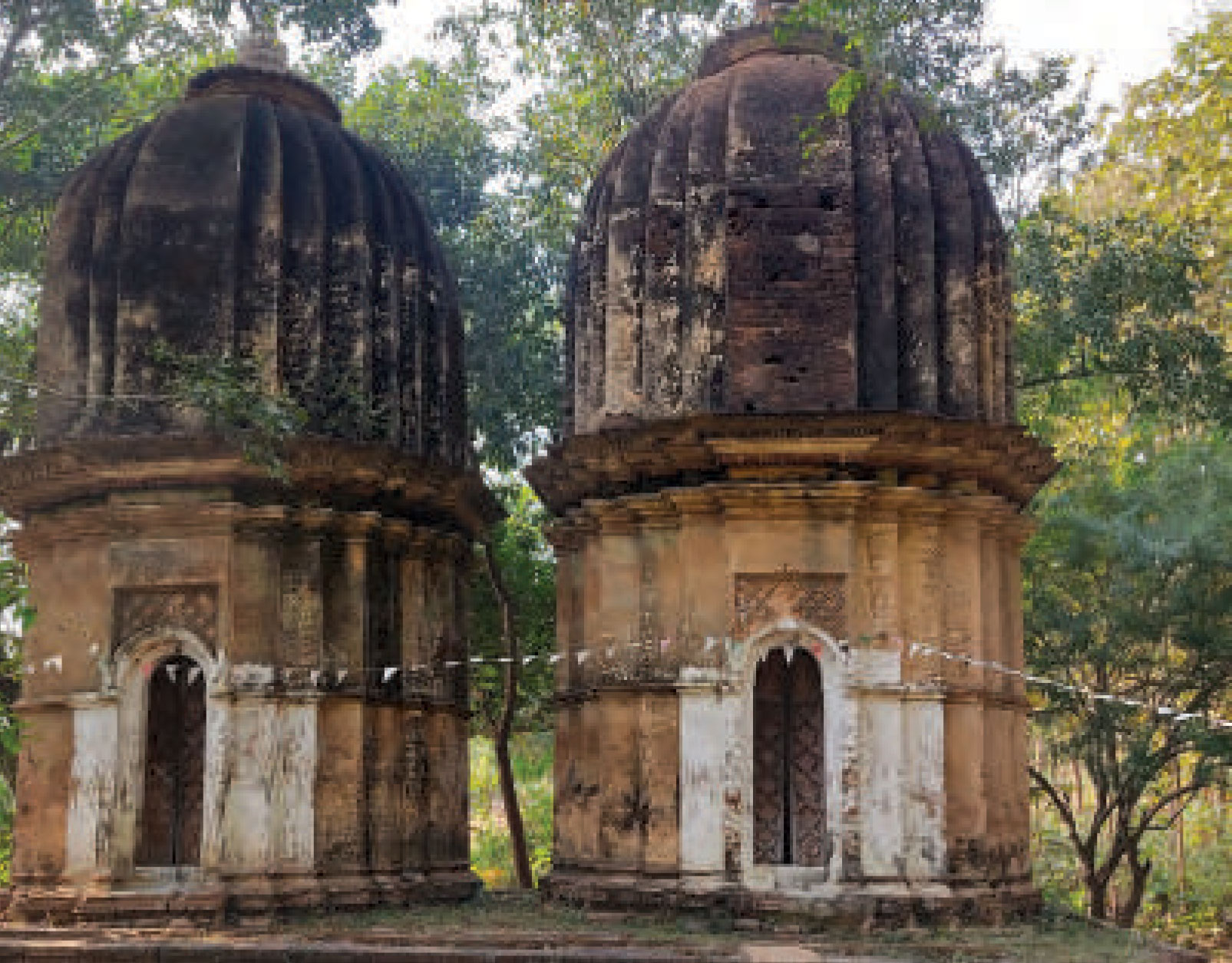
Gajan is a folk festivals of Bengal & it’s actually linked to the persons who’re related to agricultural community. Everyone worship Lord Shiva & pray for the rains & better harvest
